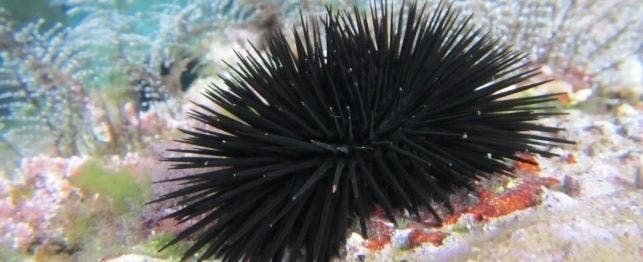
Choosing a Sea Urchin
Sea urchins are an interesting and challenging addition to the saltwater reef aquarium. These invertebrates provide a unique and distinctive appearance that lends to a more natural looking reef tank. Urchins may be kept successfully with many saltwater fish or as part of a live rock and coral display.
Appearance and Behavior
Sea urchins are easily recognized by their long pointed spines radiating from a round or sometimes flattened center. Their mouths are not visible, being located on the underside of the body. Urchins move slowly by the use of small rows of feet and the waving action of their spines. They will scavenge the tank looking for small bits of food, algae or other tank debris. Do not expect a lot of animation from sea urchins. The main appeal is their graceful beauty. The urchin has spines that can reach 3 to 6 inches in length.
Feeding and Tank Requirements
Sea urchins make their living as scavengers but sometimes will actively hunt small prey. This should not be a great concern for the average saltwater tank. They will move slowly about the rocks and gravel. They may eat tablet foods designed for bottom feeders, small pieces of fish fillet or vegetable foods. They should not be relied upon to keep a tank clean of uneaten food or fish waste, however; regular tank maintenance still applies. Most urchins do well in average marine aquarium conditions. Maintain temperature between 74 to 78 degrees Fahrenheit and specific gravity between 1.020-1.023. Expect a life span of 6 months to 3 years depending on tank conditions and successful feeding.
Special Concerns
Use extreme caution in handling sea urchins. Those beautiful spines are poisonous. If you’ve ever stepped on a sea urchin while visiting the beach you know they can inflict a painful sting. Some fish use the spines to hide in for protection from predators. Cardinal fish and triggerfish eat urchins as part of their natural diet so don’t mix these species together in the same tank.